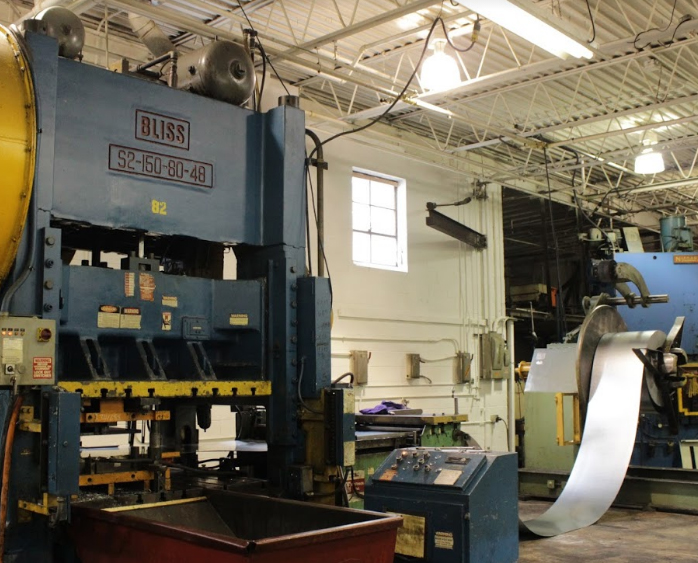Cutting & Fabricating Sheet Metal Is Faster With Lasers
Cutting & Fabricating Sheet Metal Is Faster With Lasers
Blog Article
In today’s rapidly advancing metal fabrication industry, companies are investing heavily in state-of-the-art equipment to stay competitive. This investment is driven by the need for speed, precision, and cost-efficiency. Laser cutting services for metal are becoming the preferred method for cutting through sheet metal. As the demand for high-quality products continues to grow, many businesses are finding that traditional methods fall short compared to the efficiency offered by laser technology.
The Adoption of Laser Cutting in Metal Fabrication
Laser cutting technology has transformed sheet metal fabrication. Unlike traditional methods that rely on mechanical tools, laser cutting services for metal use concentrated beams of light to achieve greater precision and faster speeds. This technology allows for intricate cuts, smoother edges, and higher accuracy, which are crucial for fabricators offering advanced solutions.
For many industries—including automotive, aerospace, and industrial manufacturing—adopting laser cutting technology is essential. A metal parts manufacturer in PA can utilize this technology to handle various metals, including stainless steel, aluminum, and other alloys. The ability to quickly and consistently cut complex designs makes laser technology an invaluable asset for custom metal work.
Merging and Partnering with Larger Entities
To keep up with the growing demand for advanced technology, many small metal fabricating businesses have merged with or partnered with larger entities. These collaborations provide access to the capital and resources necessary for investing in cutting-edge technologies like fiber laser cutting machines, automation equipment, and robotics. In today’s competitive market, staying relevant requires more than just skilled labor—it involves embracing technological advancements.
Larger firms have the financial capacity to invest in these advanced machines, which enhance speed, precision, and efficiency for complex custom metal work. This consolidation helps fabricators stay competitive by streamlining processes, reducing lead times, and expanding service offerings. For example, many stainless steel fabricators now use fiber laser cutting to manage high-volume production without sacrificing quality.
The Benefits of Fiber Laser Cutting Machines
Fiber laser cutting machines have gained popularity due to their superior performance and results. Designed for speed, they are particularly effective with thin to medium-thickness materials. Fiber lasers can cut through stainless steel, aluminum, and other metals more quickly and efficiently than traditional CO2 lasers, making them a top choice for many fabricators.
For companies offering laser cutting services for metal, fiber lasers provide several benefits:
- Faster Cutting Speeds: Fiber lasers cut thinner materials much faster than CO2 lasers, which reduces production times and boosts efficiency.
- Higher Precision: With a smaller beam size, fiber lasers offer tighter tolerances and more detailed cuts, making them ideal for precise industries like electronics and medical device manufacturing.
- Energy Efficiency: Fiber lasers consume less energy than CO2 lasers, leading to reduced operating costs and a more sustainable production process.
- Versatility: Fiber lasers can cut various materials, including reflective metals such as brass and copper, which are challenging for traditional lasers. This versatility makes them ideal for custom metal work and complex projects.
Automation and Robotics in Metal Fabrication
Beyond laser cutting, the integration of robotics and automation has significantly impacted the metal fabrication industry. Automation enables continuous production with minimal downtime, allowing businesses to undertake more projects without compromising quality. As demand for stainless steel fabricators grows, delivering high-quality products quickly is becoming increasingly important.
Many larger fabricators are incorporating robotics into their production lines to ensure consistent output and reduce labor costs. For smaller companies that have merged with larger firms, this shift towards automation offers opportunities to expand capabilities and provide a wider range of services, including custom metal work.
Why Fiber Laser Cutting Is Superior to CO2 Lasers
When choosing the best cutting technology for sheet metal fabrication, fiber laser cutting machines often outperform CO2 lasers for several reasons:
- Speed: Fiber lasers cut materials much faster than CO2 lasers, especially with thin and medium-gauge metals. This results in shorter lead times and increased productivity, making fiber lasers ideal for high-volume production.
- Lower Operating Costs: Fiber lasers are more energy-efficient and require less maintenance compared to CO2 lasers, reducing overall costs and contributing to a more sustainable process.
- Improved Precision: With a smaller focal point, fiber lasers provide tighter tolerances and finer details, essential for industries requiring intricate designs like automotive and aerospace.
- Versatility: Fiber lasers can cut a broader range of materials, including highly reflective metals such as brass and copper. This versatility is crucial for fabricators providing laser cutting services for metal, as it allows for more diverse projects.
As companies invest in advanced technologies, fiber laser cutting machines are becoming indispensable for sheet metal fabrication. Their speed, precision, and efficiency make them superior to traditional CO2 lasers. Whether a metal parts manufacturer in PA or stainless steel fabricators working on custom metal work, fiber lasers offer the performance needed to stay competitive. With automation and robotics, fabricators are now better equipped to deliver high-quality work faster, meeting the increasing demands of various sectors.
Report this page